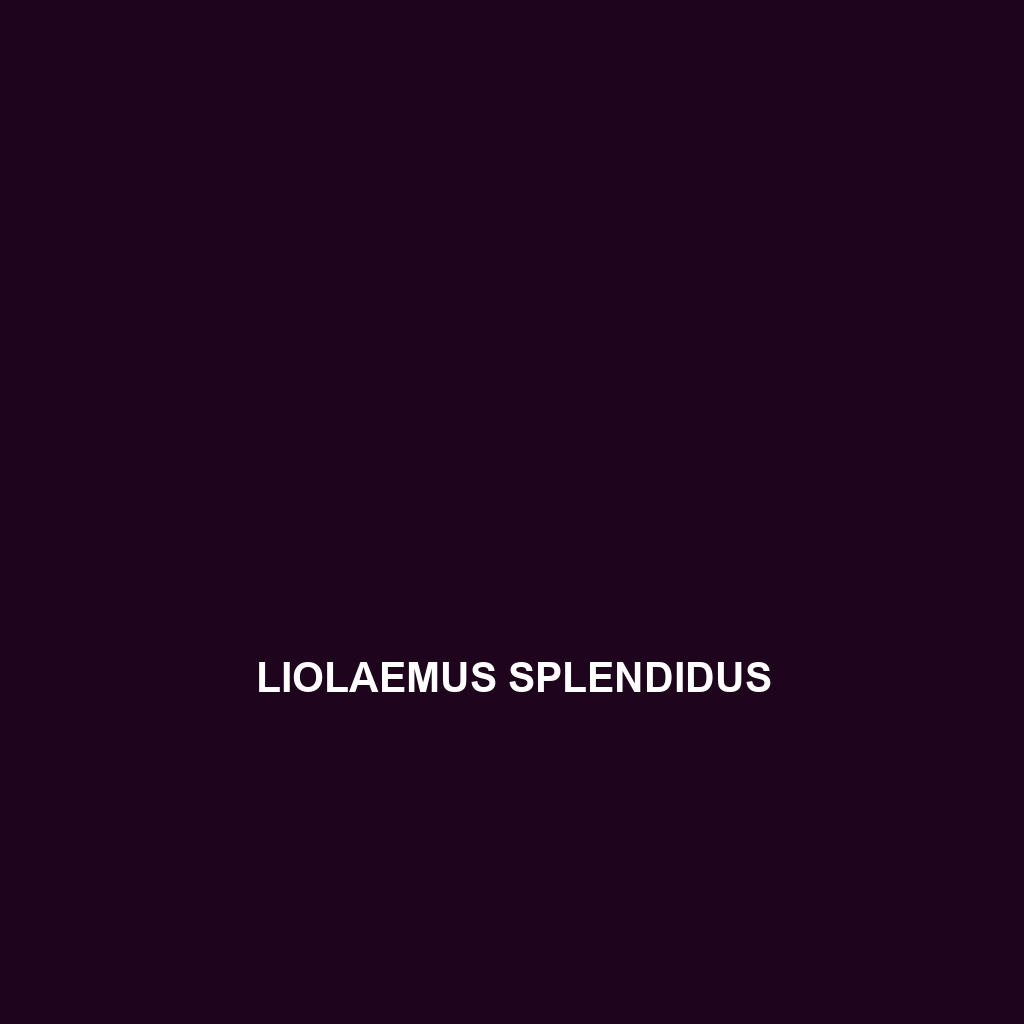Common Name
Liolaemus splendidus
Scientific Name
Liolaemus splendidus
Habitat
The Liolaemus splendidus, commonly known as the splendid lizard, is primarily found in the varied landscapes of southern South America, particularly in Chile and Argentina. This species thrives in a range of habitats, including temperate forests, savannas, and even rocky outcrops associated with mountainous regions. The splendid lizard is well-adapted to both humid and semi-arid climates, showcasing remarkable resilience as it occupies areas with diverse environmental conditions. Its habitat is characterized by a combination of pine and oak forests, shrublands, and rocky terrains, providing both shelter and ample foraging opportunities.
Physical Characteristics
The Liolaemus splendidus typically exhibits a strikingly vivid coloration, enabling it to blend seamlessly into its natural environment. Adults can measure between 15 to 20 centimeters in length, featuring a slender, elongated body with smooth, glossy scales. Their dorsal side is adorned with bright patterns that can vary in color from deep greens to vibrant blues, often with contrasting dark stripes or spots. These unique physical attributes not only aid in camouflage but also contribute to their vigorous display during mating rituals, making them a fascinating subject for herpetology enthusiasts.
Behavior
In terms of behavior, the Liolaemus splendidus exhibits a variety of interesting traits. Primarily diurnal, these lizards are most active during the day, basking in sunlight and foraging for food. They are known for their highly territorial nature, with males often engaging in elaborate displays involving head bobs and push-ups to assert dominance during the mating season. Nocturnal behavior has also been observed in some populations when conditions are favorable, allowing them to escape extreme daytime temperatures. Mating rituals showcase complex social interactions, as males compete for the attention of females through dazzling displays.
Diet
The Liolaemus splendidus is predominantly an insectivore, feeding on a varied diet that primarily includes insects such as crickets, beetles, and ants. There are also documented instances of them consuming small invertebrates, which assists in their growth and sustains their energy levels for the active lifestyle they lead. Owing to their opportunistic feeding habits, they can adapt to changes within their environment, allowing them to thrive in different ecological niches.
Reproduction
The reproductive cycle of the Liolaemus splendidus typically occurs in the warmer months, generally from late spring to early summer. Males establish territories and attract females through their colorful displays. After successful mating, females undergo a gestation period lasting approximately 60 to 90 days before giving birth to live young—this ovoviviparous mode of reproduction is relatively rare in lizards. Offspring are fully developed at birth and exhibit similar coloration to adults, allowing them to camouflage effectively in their habitat. Maternal care is minimal, though mothers do exhibit a nurturing behavior by selecting suitable environments for their young.
Conservation Status
Currently, the Liolaemus splendidus is classified as vulnerable due to habitat loss driven by agriculture, urbanization, and climate change. As human activities continue to encroach upon their natural habitats, conservation efforts are imperative for their survival. Local authorities and environmental organizations are working to establish protected areas and promote ecological awareness amongst communities to ensure the sustainable future of this remarkable species.
Interesting Facts
One interesting fact about the Liolaemus splendidus is its ability to change its body coloration in reaction to environmental changes—a behavior that not only aids in temperature regulation but also in communication with other lizards. Additionally, the splendid lizard showcases an exceptional capacity for thermoregulation, allowing it to survive in areas with alternating temperature extremes. All these traits make the splendid lizard a fascinating example of evolutionary adaptations.
Role in Ecosystem
The Liolaemus splendidus plays a crucial role in its ecosystem as both predator and prey. As an insectivore, it helps to control insect populations, contributing to ecological balance. Furthermore, it serves as a food source for higher-level predators, thus integrating itself into the food web. The presence of healthy populations of Liolaemus splendidus can indicate a stable and thriving ecosystem, making them vital for maintaining biodiversity.
